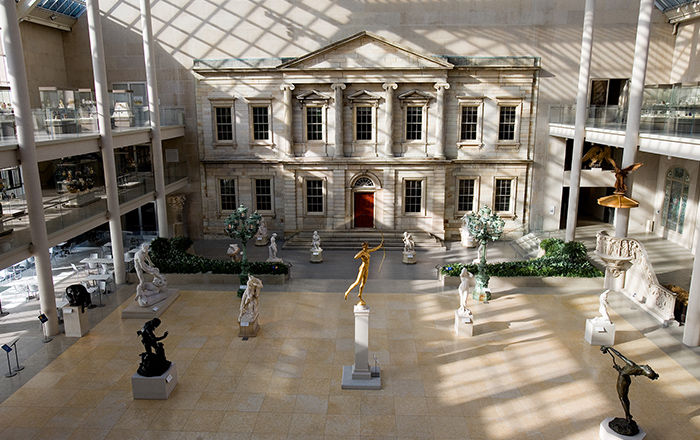Gorget
Not on view
During the eighteenth and early nineteenth centuries, Europeans and Euro-Americans presented silver gorgets like this one to Native Americans as part of diplomatic negotiations, to forge political and trading relationships, to signal respect, and to curry favor. A form common to various cultures throughout history, the gorget was worn either to protect or adorn the neck. In eighteenth-century Europe, the gorget had evolved from a form of medieval armor into a neck ornament, usually of silver, that denoted an officer’s rank. Both French and British officers active in North America wore distinctly styled gorgets as part of their uniforms. Native Americans too had their own traditions of wearing gorgets made from stone and shell, which may have enhanced the appeal of silver versions used for diplomacy and trade. Silver gorgets made for trade with Native Americans were often engraved with wrigglework designs. Common motifs included indigenous animals, pseudo-heraldic devices, and sun faces or starbursts, such as that seen here. A round gorget with a similar engraved starburst design in the collection of the Field Museum, Chicago, was found in Mississippi, attesting to the geographical extent of the political and trading networks through which gorgets would have been exchanged.
